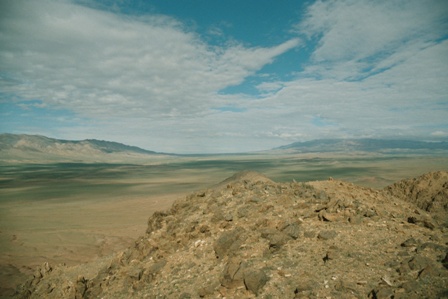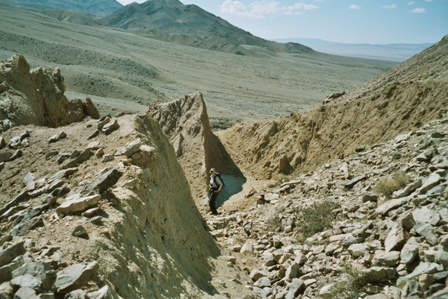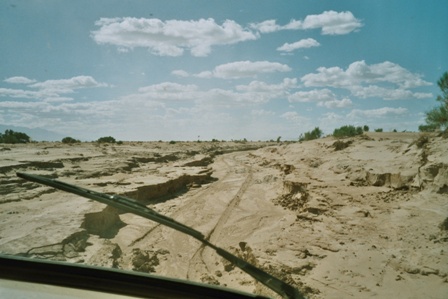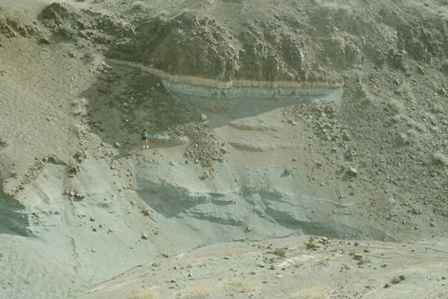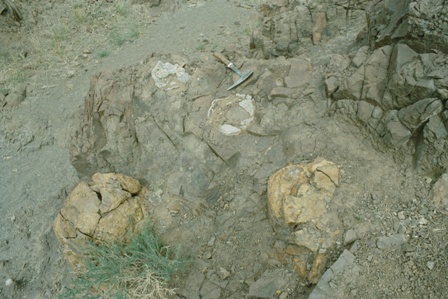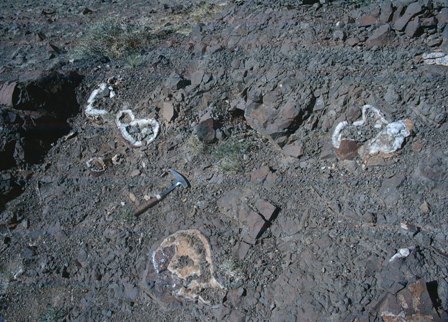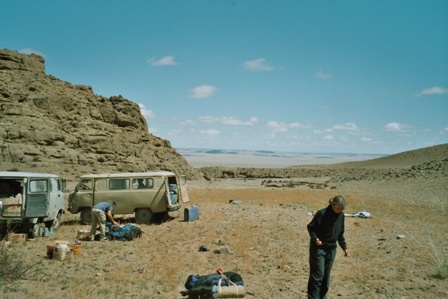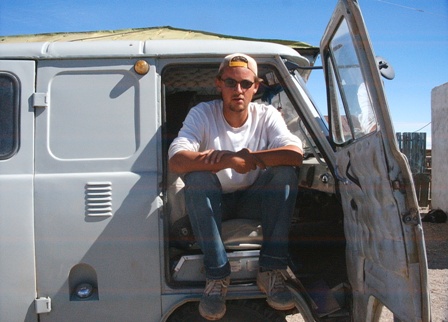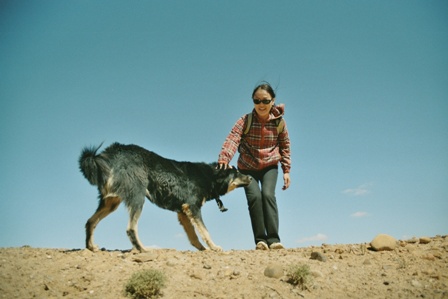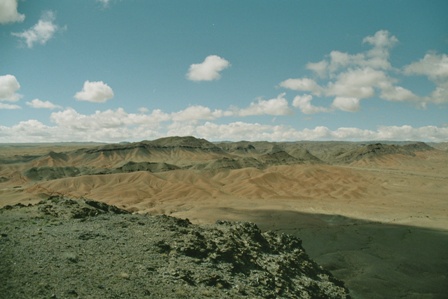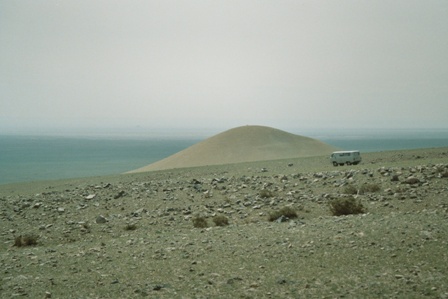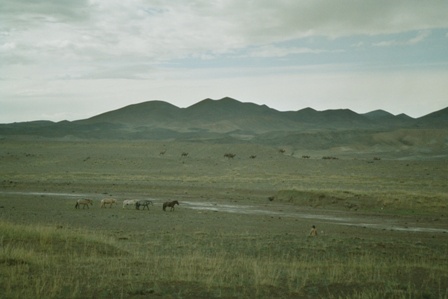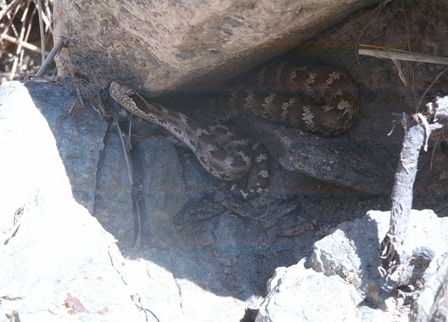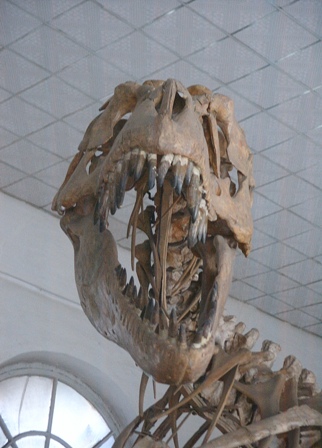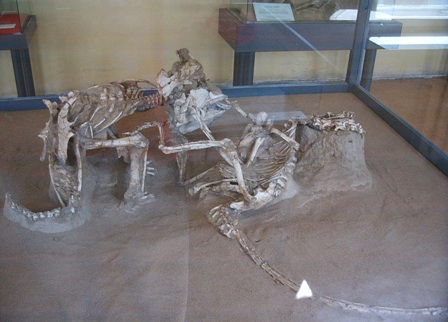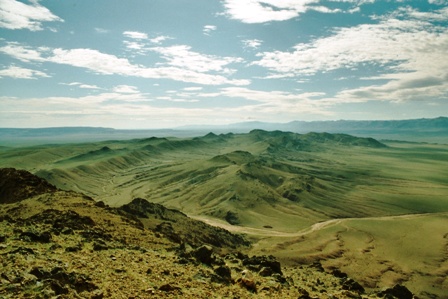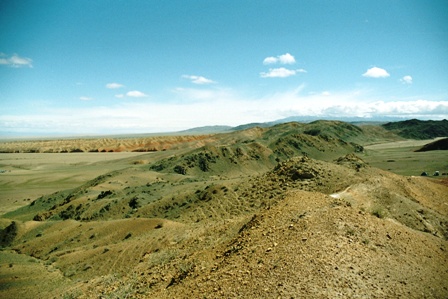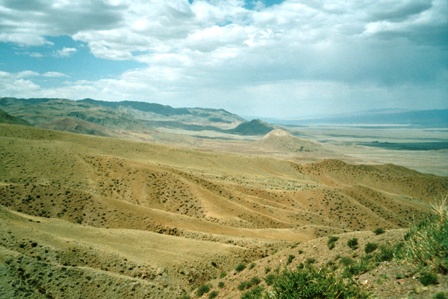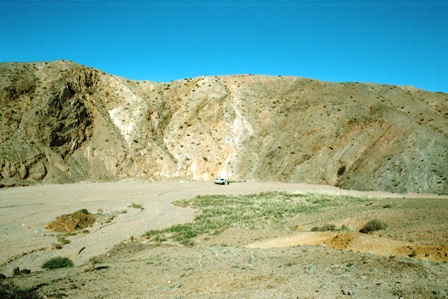|
Mongolia 2004
This field trip was carried out to reconstruct the Mesozoic tectonic history of the Gobi Altai region in southern Mongolia. In the Cenozoic, the region was deformed into high, narrow ridges and wide valleys, as a result of transpressional strike-slip activity. Along these ridges, Mesozoic sediments and volcanics crop out. Integrated stratigraphy, sedimentology, structural geology and volcanic geochemistry are applied to reconstruct the preceding geologic history. This page shows pictures of the field trip. The first publications are expected in 2007.
Two of these transpressional ranges are Artsa Bogd (left; south) and Baga Bogs (right, north).
In the countryside of Mongolia, water can be collected from wells. My driver Mongonsukh and I are filling the barrels (obviously being aware of the camera...).
In 1957, an heavy earthquake ruptured a fault over a distance of 250 km. The displacement was 5 m. This site, north of the mountain Ih Bogd, is one of the most famous locallities of the rupture. Sarah for scale.
The skies above the steppes of Mongolia are famous. This one is particularly awesome. Note the vague rainbow.
Speaking of rainbows...those who think that a desert is dry (I did) are mistaken. In the summer, the Siberian taiga evaporates, which rained down on me...
Mongolian highway 65. Frequently, river beds are used as tracks. This should be done carfully, though, since they may be swampy. This particular river flows through a dunefield north of Ih Bogd (when there is water of course...)
This picture, taken on the northern flank of Bulgantiin Uul, shows a basaltic lavaflow on top of blue lacustrine clays. My translator Ogii for scale.
Typical for basalt are so-called columnar joints, which form the pilars in the photo. Photo taken on Bulgantiin Uul.
...and typical for volcanic flows are vesicles (air bubbles) in the rock. After lithification of the rock, these bubbles then fill up with minerals (in this case quartz - white - and jasper - yellow/red). These filled bubbles are called geodes, and collecting them becomes a hobby in no time!
...and more geodes...
...and more geodes!
Sarah and Dickson breaking up camp on Ih Bogd. The vans in the picture are Russion army vehicles. These 4WD use 20 liters of gas for every 100 km (as well as 2 liters of oil). And believe it or not, the beige one is 10 years old, the white one only 2...
Me in the van, after 7 weeks of non-showering, dusty fieldwork...
Me, on an average field day in the steppes.
Sometimes, my translator Ogii joined me in the field, to have a walk and some good views. Black basalt in the background, on the northern flanks of Artsa Bogd.
Other fieldmates were sometimes my cook Oyuna and Mongolian stray dogs. I have to say that the conversation with the dog was easier than with the Oyuna in Mongolian...
Alternating red river sediments and black basalts in the Cretaceous north of Dulaan Bogd. Geode time!
Rhyolite volcano on the southern flanks of Baga Bogd. If you are female, you're not allowed to climb up. If you are a geologist, you are not allowed to hammer the rocks. This mountain is sacred to the locals.
Typical wildlife of the Gobi: Przewalski horses in the front, camels in the back
...and of course snakes!
The Gobi desert is of course famous for its dinosaurs. The dino-pictures were (legally) taken in the National History Museum of Ulaan Baatar (capital of Mongolia). This particular cutie is called the Tarbosaurus and is obviously a close cousin of the T Rex.
The reason for the excellent preservation of dinosaurs in their living positions is probably the fact that the Cretaceous Gobi contained dune fields. When dunes become oversaturated with groundwater, they can collapse and cover everything in its surroundings within seconds. This particular photo shows a nest of young Protoceratops.
But the most famous dinosaur fossil of the Gobi is "the fighting dino's". Left you see a Protoceratops (approximately 4 ft long), with the front leg of the lying Velociraptor in between its jaws. The hind claws of the Velociraptor are placed in the belly and neck of the Protoceratops. Alledgedly, then the dune collapsed and the fight was frozen for 80 million years...
Upthrusted ridge north of Artza Bogd (mountain range to the right). The thrust runs in the valley, and motion direction is from lower right to uppe left of the picture.
Upthrusted basement ridge (blue colours, central part of the picture) over Jurassic lavas (black, right). In the left, unconformable Cretaceous and Paleogene sedimentary cover. Dulaan Bogd Pass. Note our camp in the right of the picture.
Valley of lakes, looking north from Ih Bogd.
Relict Cretaceous half-graben on Ih Bogd mountain. North (right) facing normal fault in centre of picture. High ridge in the basin consists of conglomerates and a rhyolite volcano. Valley of lakes to the right.
Extensional detachment in the Dulaan Bogd pass. Greenschist-facies mylonites to the right, parallel overprinted by cataclasite (white, middle), and unmetamorphosed carbonates to the left. Van for scale. Top motion to the left (north). The foliation plane is folded and turns subhorizontal to the right. Alledged age: late Paleozoic
Finally: can someone please tell me what this means? My Chinese has been a bit rusty lately, but I thought my English was OK...
|
